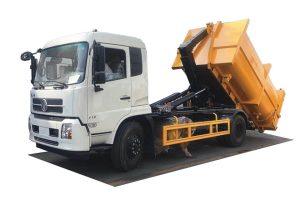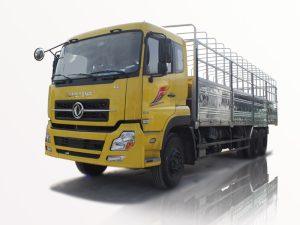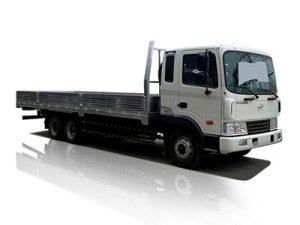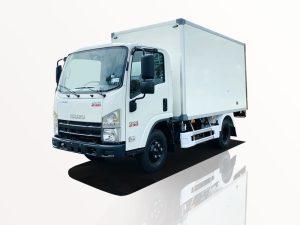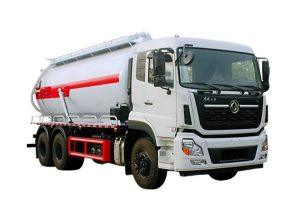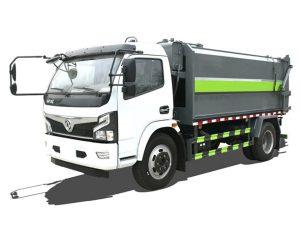Monday to Saturday - 8:00 -17:30
Ultimate Guide to 6×6 Transfer Cases: Everything You Need to Know
The 6×6 transfer case is a crucial component in many off-road and heavy-duty vehicles, providing drivers with enhanced traction and control. This guide delves into the intricate details of 6×6 transfer cases, their functionalities, advantages, and much more. Whether you’re a mechanic, an off-road enthusiast, or a truck owner, this comprehensive article will provide valuable insights into the workings and benefits of a 6×6 transfer case.
What is a 6×6 Transfer Case?
A 6×6 transfer case is a drivetrain component in vehicles that allows power to be distributed to six wheels simultaneously. Unlike conventional four-wheel drive systems, a 6×6 setup is most commonly found in specialized vehicles designed for off-road conditions, such as military trucks, custom-built 4x4s, and certain heavy-duty towing vehicles.
How Does a 6×6 Transfer Case Work?
The transfer case operates by receiving power from the vehicle’s transmission and distributing it to the front and rear axles. In a 6×6 system, power is distributed to two additional rear wheels, allowing for improved traction, stability, and load-carrying capability on rugged terrains.
Components of a 6×6 Transfer Case
- Input Shaft: Connects to the transmission.
- Output Shafts: Directs power to the front and rear axles.
- Gear Sets: Control the torque and speed of the vehicle.
- Chain/Belt Mechanism: Transfers power efficiently between components.
Benefits of a 6×6 Transfer Case
Enhanced Traction
The primary advantage of a 6×6 transfer case is the added traction it provides. By powering six wheels instead of four, vehicles are better equipped to handle mud, sand, snow, and steep inclines.
Improved Load-Bearing Capacity
With additional wheels on the ground, vehicles with a 6×6 transfer case can carry heavier loads without compromising stability. This feature is particularly useful in construction and military applications.
Superior Off-Road Performance
Whether traversing rocky terrains or deep waters, 6×6 transfer cases enhance off-road capabilities, allowing vehicles to navigate obstacles that standard 4×4 vehicles may struggle with.
Comparing 4×4 and 6×6 Transfer Cases
To better understand the functionality of a 6×6 transfer case, it’s essential to compare it with a 4×4 system.
| Feature | 4×4 Transfer Case | 6×6 Transfer Case |
|---|---|---|
| Wheels Powered | 4 Wheels | 6 Wheels |
| Traction | Good | Excellent |
| Load Capacity | Moderate | High |
| Off-Road Capability | Good | Superior |
Types of 6×6 Transfer Cases
Part-Time 6×6 Transfer Cases
Part-time 6×6 transfer cases allow drivers to engage the extra wheels only when necessary, providing flexibility and better fuel efficiency during on-road conditions.
Full-Time 6×6 Transfer Cases
Full-time systems engage all six wheels automatically. These systems are ideal for constant off-road driving or in challenging terrains.
Manual vs. Automatic 6×6 Transfer Cases
Manual transfer cases require drivers to engage the system manually. In contrast, automatic transfer cases utilize sensors to detect wheel slippage and activate the additional wheels without driver intervention.
Common Applications of 6×6 Transfer Cases
Military Vehicles
6×6 transfer cases are prominent in military applications, such as troop carriers and transport vehicles, where reliability and off-road capability are paramount.
Heavy-Duty Trucks
In industries such as construction, logging, and mining, 6×6 transfer cases enhance the performance of heavy-duty trucks, enabling them to handle rough terrains and heavy loads effectively.
Off-Road Vehicles
Custom-built off-road vehicles often feature 6×6 transfer cases for enhanced performance over various terrains, giving enthusiasts a competitive edge in off-road competitions.
Installation and Maintenance Tips
Installation of a 6×6 Transfer Case
Installing a 6×6 transfer case requires skilled labor and specialized tools. It’s crucial to ensure compatibility with the vehicle’s existing drivetrain. Here are some general steps:
- Ensure you have all necessary tools and parts.
- Lift the vehicle and secure it on jack stands for safety.
- Remove the existing transfer case carefully.
- Install the 6×6 transfer case, following the manufacturer’s guidelines.
- Reconnect all necessary drivetrain components.
- Test the system thoroughly after installation.
Regular Maintenance for Longevity
To keep a 6×6 transfer case functioning optimally, regular maintenance is essential:
- Check fluid levels regularly and replace as necessary.
- Inspect for leaks or signs of wear.
- Ensure that all electrical connections are secure and functioning.
- Follow a regular schedule for fluid changes, typically every 30,000 to 50,000 miles.
Cost Considerations for 6×6 Transfer Cases
The price of a 6×6 transfer case can vary greatly based on brand, specifications, and whether it’s new or used. Typically, costs can range from $1,000 to $5,000, excluding installation fees. Custom-built options will often be higher.
Key Features to Consider When Buying a 6×6 Transfer Case
When selecting a 6×6 transfer case, consider the following features:
- Gear Ratios: Determine the best ratio for your driving needs.
- Weight Capacity: Ensure it can handle your vehicle’s load.
- Durability: Look for rugged construction materials.
- Compatibility: Verify that the transfer case fits with your vehicle’s existing components.
Frequently Asked Questions (FAQ)
1. What is the difference between 4×4 and 6×6 systems?
The main difference is the number of wheels powered. A 4×4 drives four wheels while a 6×6 drives six, providing better traction and load capacity.
2. Can I install a 6×6 transfer case in any vehicle?
Not all vehicles support the installation of a 6×6 transfer case. It’s crucial to check compatibility with your vehicle’s drivetrain.
3. How often should I change the transfer case fluid?
It’s generally recommended to change the fluid every 30,000 to 50,000 miles, but consult your owner’s manual for specific guidelines.
4. Is a 6×6 transfer case worth the investment?
If you frequently drive in off-road conditions or require high load capacity, investing in a 6×6 transfer case can significantly enhance vehicle performance.
5. Are there any downsides to using a 6×6 transfer case?
While they offer superior traction and load bearing, 6×6 systems can be more complex, heavier, and may reduce fuel efficiency compared to standard 4×4 systems.
6. What types of vehicles typically have 6×6 transfer cases?
Common applications include military vehicles, custom off-road trucks, and heavy-duty work trucks used in industries requiring rugged performance.


